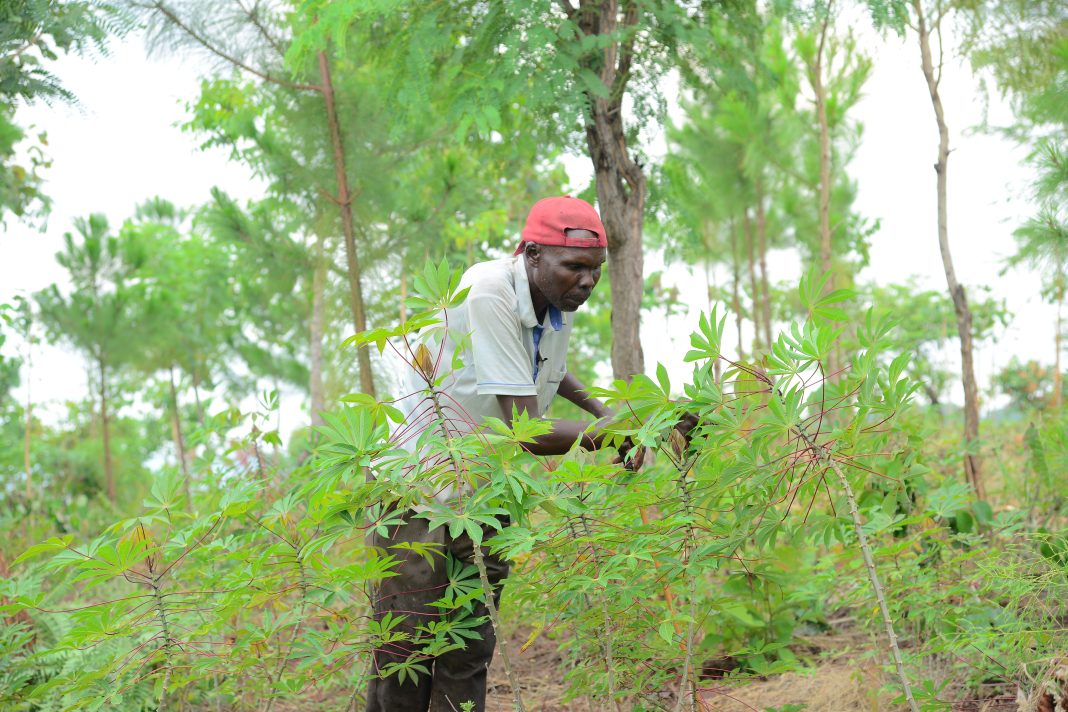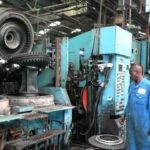Robert Ezati, 57, of Adim Parish, Beliafe Subcounty, in Uganda’s West Nile District of Terego, has endured years of agonising helplessness while others clear trees to make room for tobacco plants to thrive in his area. Since then, the district and the areas around it have experienced significant environmental degradation due to climate change.
Drier spells have become more frequent, and once-high-yielding crops now hardly yield enough for a respectable harvest each season. For about ten years, Ezati, who was distressed by the impact, pondered what to do to save a situation so dire.
“I stopped the people from cutting down trees. Currently, we are planting more, which is why the area is green now. I also pay all the workers Shs5,000 ($1.3) per day for planting trees,” he said.
On the small mobilised pieces of land where this is being done, Ezati said that his colleagues have started intercropping the trees with food crops like sorghum and cassava, mainly for food security.
The once-green area had turned lifeless, but now, following the tree replanting efforts, even the chirping birds and beautiful butterflies that had disappeared have since returned, and this has also had a personal effect on his life.
“My life changed when I started working with the Ecological Christian Organization. The knowledge they shared with us about the environment was eye-opening, and the tools, logistics, and seedlings needed to plant trees made a huge impact on our lives,” Ezati revealed.
The group’s efforts have since seen a total of 2,279 hectares of forest and about 400 hectares of wetlands in the district restored in the past few years.
The district is one of the major hosts of hundreds of refugees, with most of them coming from the neighbouring restive South Sudan.
Currently, Uganda is home to over 1.6 million refugees coming from South Sudan, the Democratic Republic of the Congo, Rwanda, Somalia, and Eritrea, among others. Their presence also puts pressure on the environment as both they and their host communities struggle for resources like wood fuel, among others.
The current tree-planting efforts are part of a four-year collaboration between the refugees and the host community in the district.
With funding from the European Union Emergency Trust Fund for Africa, the project aims at restoring and conserving degraded fragile ecosystems for improved community livelihoods among the refugees and host communities in Uganda’s West Nile and Albertine Regions. The project is implemented by the Uganda Biodiversity Fund in collaboration with the Ecological Christian Organisation, the Wildlife Conservation Society, and Nature Uganda.
According to Harriet Tumushabe, the project manager and representative of the Uganda Biodiversity Fund, Wildlife Conservation Society, and Nature Uganda, the project has been running since 2020 but was interrupted by the #Covid-19 pandemic.
“The European Union invested Euro 5.4 million (Shs21.4 billion) in the restoration of degraded ecosystems in Terego, Yumbe, Kyegegwa Kikuube, and Kamwenge districts,” she said.
This very project, Tumushabe added, has so far been a great success as it has enhanced the adoption of sustainable land management practices, agroforestry, climate-smart agricultural practices, and woodland establishment.
“The project has restored 2,279 hectares of degraded forests, woodlands, and woodlots, as well as 400 hectares of wetlands and river banks,” she said.
This project is in line with the European Union response to address increased environmental degradation by providing or promoting alternative energy sources in the refugee-hosting areas of Uganda.
According to the project implementers, it has achieved its overall goal of restoring degraded forests, savanna woodlands, and wetlands in most of the of the parts where it is being implemented.
“We have so far restored 353 hectares of central forest reserves. Woodlots of 596 hectares have been established. We have promoted agro-forestry practices and sustainable land management practices,” Tumushabe said.
The project has also seen the introduction of alternative sources of livelihood like fruit planting, beekeeping, and others, which could sustain families and keep them away from environmentally unfriendly acts like charcoal burning.








